|
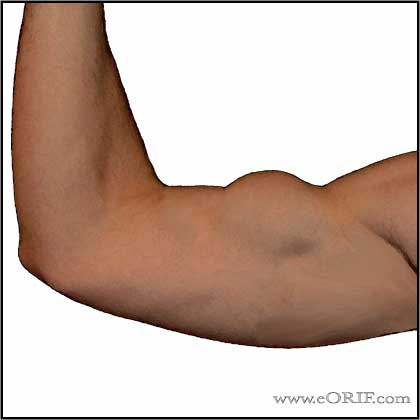
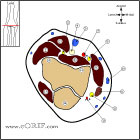
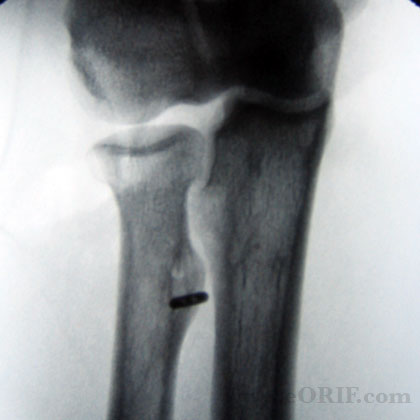
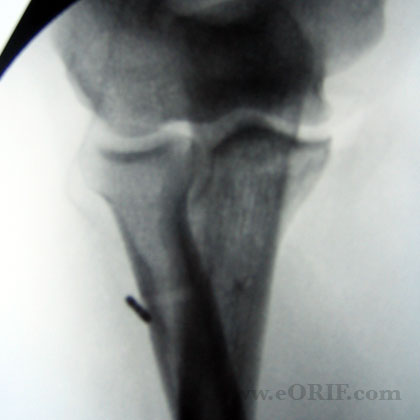
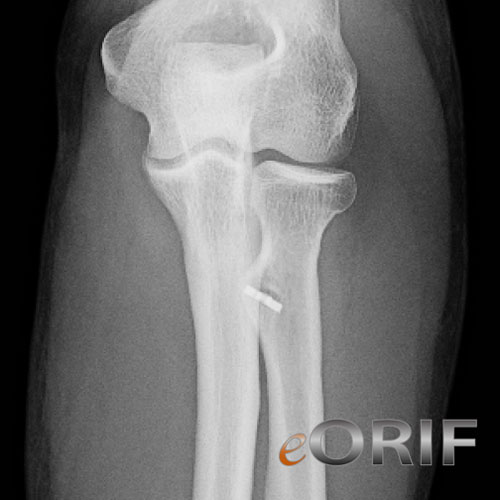
|
synonyms: distal biceps tendon rupture, biceps avulsion, distal biceps tendon tear
Distal Biceps Rupture ICD-10
- S46.212A Strain of muscle, fascia and tendon of other parts of biceps, left arm, initial encounter(link is external)
- S46.211A Strain of muscle, fascia and tendon of other parts of biceps, right arm, initial encounter(link is external)
- S46.299A Other injury of muscle, fascia and tendon of other parts of biceps, unspecified arm, initial encounter
- S46.291A Other injury of muscle, fascia and tendon of other parts of biceps, right arm, initial encounter
- S46.292A Other injury of muscle, fascia and tendon of other parts of biceps, left arm, initial encounter
- See all Other Biceps Tendon ICD-10
A- initial encounter
D- subsequent encounter
S- sequela
Distal Biceps Rupture ICD-9
- 727.69 (rupture of tendon, nontraumatic, other)
- 841.8(sprains and strains of elbow and forearm, other specified sites).
- 905.8(late effect of tendon injury)
Distal Biceps Rupture Etiology / Epidemiology / Natural History
- Most common in dominant extremity of men in 4th-6thdecade (50yr/old). All reported cases of complete distal biceps have been in men. Women have had partial ruptures reported.
- 40% loss of elbow flexion and suppination power in untreated pts (Morrey BF, JBJS 1985;67A;418), (Baker BE, JBJS, 1985;67A:414).
- Chronic distal biceps ruptures treated non-operatively shorten their forearm arc, increase the contributions of the brachioradialis and shoulder muscles, and lose 32% of supination power (Schmidt CC, ASES 2017 Specialty Day).
- MOI=unexpected extension force (eccentric contraction) applied to arm in 90 degrees of flexion and supination.
- Partial tears are typically from chronic degeneration without acute trauma.
- Prepisposing Factors: anabolic steriod abuse, bony irregularities of the bicipital ridge, chronic cubital bursitis, smoking. (Safran MR, CORR 2002;404:275).
Distal Biceps Rupture Anatomy
- Typically avulses from its radial tuberosity insertion. +/- rupture of bicipital aponeurosis.
- The distal biceps tendon runs in a sheath lateral to the median nerve and brachial artery and medial to the ulnar nerve.
- Distal biceps tendon has two distinct heads: a continuation of the long head and of the short head. Short head inserts distal to the radial tuberosity, acting more as an elbow flexor. Long head inserts into the radial tuberosity, acts more a supinator. (Eames MH, JBJS 2007:89A:1044).
- (Mazzocca AD, JSES 2007;16:122)(link is external).
Distal Biceps Rupture Clinical Evaluation
- Sudden, sharp, painful tearing sensaion in antecubital region, occasionally posterolateral elbow. Gradually (few hours) replaced by dull ache, which may last for weeks or become chronic.
- Ecchymosis and swelling in antecubital fossa and along medial aspect on arm and proximal forearm.
- Antecubital fossa tenderness
- Biceps muscle belly may be proximally retracted, especially with flexion.
- Palpable defect in bicep tendon. Not as pronounced if bicipital aponeurosis is intact
- Initially note weakness in supination and flexion. Main long term complaint is suppination weakness, flexion weakness diminishes with time.
- Partial tears may present with chronic pain in the cubital fossa and biceps fatigue/weakness.
- Squeeze test: distal arm is squeezed with the elbow flexed 60 to 80 degrees and the forearm pronated. Intact biceps tendon will cause forearm supination. Torn biceps no forearm supination. (Ruland RT, Clin Orthop Relat Res. 2005 Aug;(437):128-31)
Distal Biceps Rupture Xray / Diagnositc Tests
- A/P, lateraland oblique elbow films indicated. Generally no osseous changes. Avulsions of portions of radial tuberosity have been reported.
- MRI generally not needed, helpful for suspected partial tears presenting with chronic pain in the cubital fossa. (Williams BD, Skeletal Radiol, 2001;30:560).
Distal Biceps Rupture Classification / Treatment
- non-operative=elderly, sedentary, to ill for surgery. Long-term outcome =activity related pain in arm and forearm, decreased strength and endurance in flexion and supination.
- Acute<4wks: Distal Biceps Repair 24342 indicated. Results are predictably good.
- Chonic>4wks: Repairs of chronic ruptures are dependent on integrity of bicipital aponeurosis, amount of retraction and scaring. Often difficult to obtain sufficient length, increased incidence of complications. Often require allograft (Achilles, semitendinosis). (Wright TW, Tech Hand Upper Extremity Surg 2004;8:167).
- Partial: best treated by releasing remaining tendon, debridement and anatomic reattachment if fails to respond to nonoperative management.. (Dellaero DT, JSES 2006;15:215)(link is external)
Distal Biceps Rupture Associated Injuries / Differential Diagnosis
- Cubital bursitis(enlargement of bursal sac that lies between bideps tendon and anterior radial tuberosity)
- Bicipital tendinosis
- Partial biceps tendon rupture
- Entrapment of lateral antebrachial cutaneous nerve
- Elbow dislocation
- Radial head fracture
Distal Biceps Repair Complications
- Infection
- Nerve injury (lateral antebrachial cutaneous, radial/posterior interosseous, median)
- Rerupture (<5%)
- Bone tunnel fracture
- Radioulnar synostosis: generally from subperiosteal disssection of the ulna in two incision approaches. Dorsal approaches spliting the extensor carpi ulnaris and extensor digitorum communis without exposing the radius reduce the risk.
- Stiffness
- Anterior elbow pain
- heterotopic ossification
- CRPS
- Kelly EW, JBJS, 2000;82A:1575
Distal Biceps Rupture Follow-up Care
- immobilized at 90 degrees elbow flexion, forearm in neutral 7-10days.
- Hinged flexion-assist splint with 30 degree extension block until 8wks. May block extension at up to 75 degrees for tenuous repairs and extend 20 degrees per week starting at 6weeks post-op.
- full-extension at 10wks
- Active flexion begins at 8wks, strengthening at 12wks, unrestricted use at 16wks
- full strength and endurance expected at 1 yr
- Morrey = 97% flexion strength, 95% supination strength compared to uninjured extremity.
- Mean time to return to sport 6.0+/-2.8 months. Generally small but appreciable decrease in strength compared to pre-injury. (Gowd A, JSES 2021;30:2097-2104)
- Distal Biceps Repair Rehab Protocol.
Distal Biceps Rupture Review References
- Yamaguchi K editor, Advanced Reconstuction: Elbow, AAOS 2007(link is external)
- Ramsey ML, JAAOS 1999;7:199
- Orthopaedic Knowledge Update: Shoulder and Elbow, No. 3(link is external)
- AAOS Athletes Elbow DVD.(link is external)
- Mazzocca AD, Burton KJ, Romeo AA, Santangelo S, Adams DA, Arciero RA. Biomechanical evaluation of 4 techniques of distal biceps brachii tendon repair. Am J Sports Med. 2007 Feb;35(2):252-8. Epub 2006 Dec 27
- Cain RA, Nydick JA, Stein MI, Williams BD, Polikandriotis JA, Hess AV. Complications following distal biceps repair. J Hand Surg Am. 2012 Oct;37(10):2112-7
- Gowd A, JSES 2021;30:2097-2104
|





